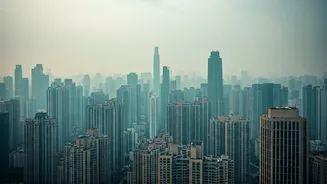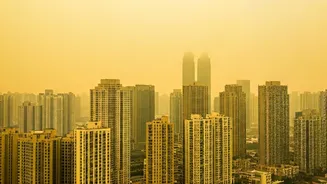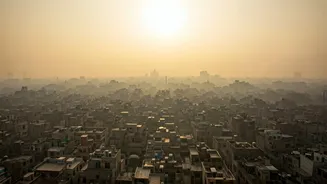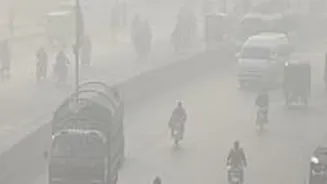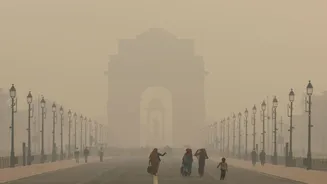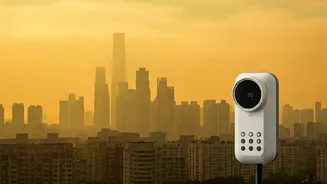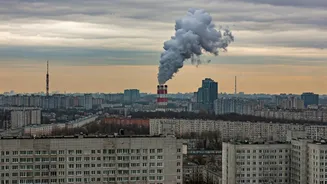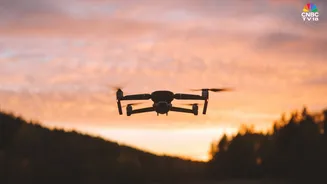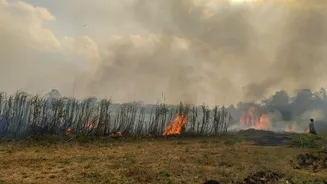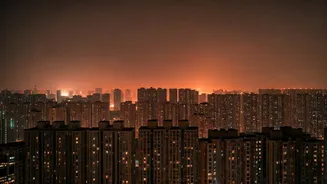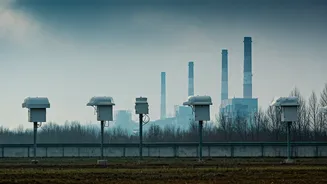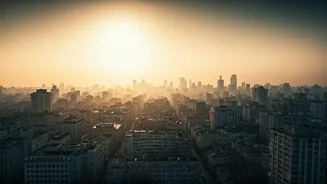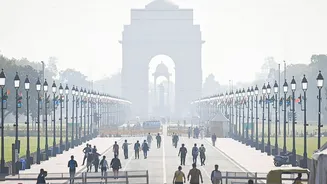Diwali's Aftermath in Delhi
Post-Diwali, the city of Delhi experienced a significant deterioration in its air quality, registering a worrying Air Quality Index (AQI) of 282, marking
it as the worst in Punjab. This spike in pollution triggered widespread worry among residents. This drastic change in air quality immediately after the festival sparked a debate regarding the specific factors contributing to the problem. The main concerns are regarding the immediate health risks associated with the extremely poor air quality levels.
Sources of Pollution
The sources of pollution in Delhi are multifaceted, with a combination of factors amplifying the problem. The use of firecrackers during Diwali is a major contributor, releasing vast amounts of pollutants into the atmosphere. Additionally, stubble burning in neighboring states adds to the problem, as prevailing winds carry the smoke towards Delhi. Vehicle emissions and industrial activities also play a significant role. These multiple sources combine to create a perfect storm of hazardous air quality, especially in the winter months when atmospheric conditions trap pollutants closer to the ground. The accumulation of these pollutants leads to a dangerous cocktail of air toxins, making the air difficult to breathe.
Government Response and Blame
The Delhi government's response to the crisis has involved various measures and also received some criticism. Authorities have implemented restrictions on construction activities and other pollution-generating operations to curb further deterioration of air quality. There have been statements that suggest the government's perspective on the matter, while some suggest the need for immediate, drastic steps. The BJP has directed blame towards Punjab, claiming that the pollution has stemmed from post-harvest practices. This exchange of accusations has highlighted the complex dynamics of responsibility and the need for coordinated efforts across state borders. The immediate effect of the government's work is yet to be determined, as the situation unfolds.
Health and Safety Concerns
The effects of severely polluted air on public health are of serious concern. Prolonged exposure to poor air quality can result in respiratory problems, aggravate existing medical conditions, and elevate the risk of other health issues. Vulnerable populations, like children, the elderly, and those with respiratory ailments, are particularly at risk. Residents are advised to take necessary precautions, such as wearing masks and limiting outdoor activities during peak pollution hours. The government and the health authorities are issuing regular advisories to keep the public aware of the hazards and suggest ways to mitigate the health risks. These warnings are essential as the crisis continues.
Long-Term Solutions Needed
Addressing Delhi's air pollution crisis requires a multi-pronged strategy focused on the long term. This involves stricter enforcement of emission standards, promoting electric vehicles, and investing in public transportation to reduce vehicle emissions. Also, controlling industrial pollution through enhanced regulations and monitoring is essential. Additionally, the effective management of crop residue, through alternatives to burning and promoting sustainable agricultural practices, can greatly reduce the influx of pollutants from neighboring states. Improving air quality requires concerted efforts to build a sustainable environment.
